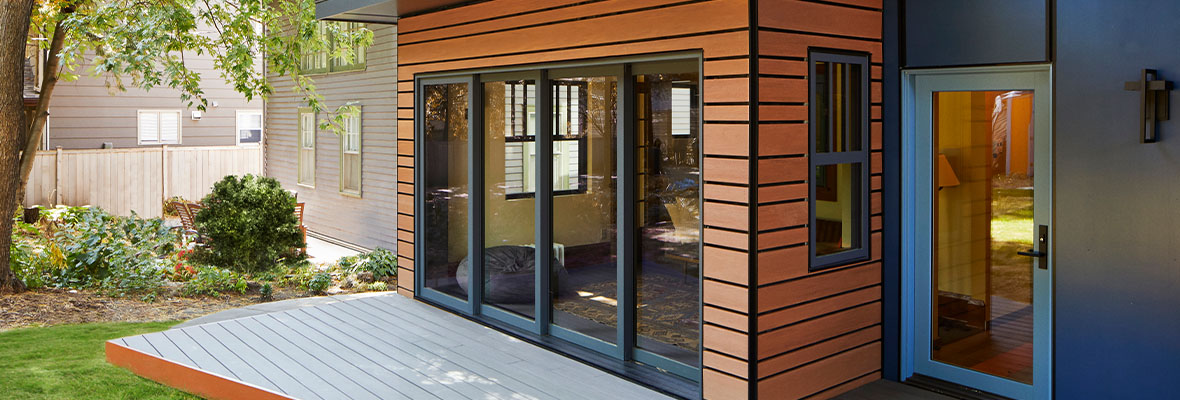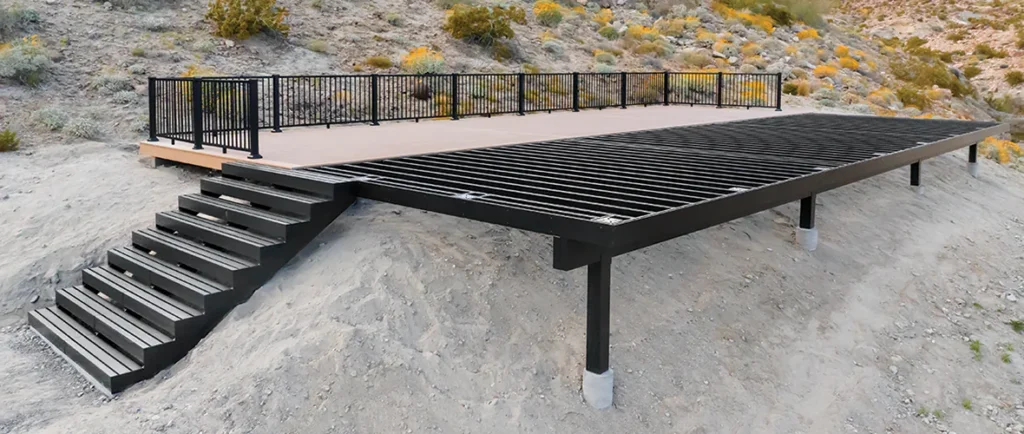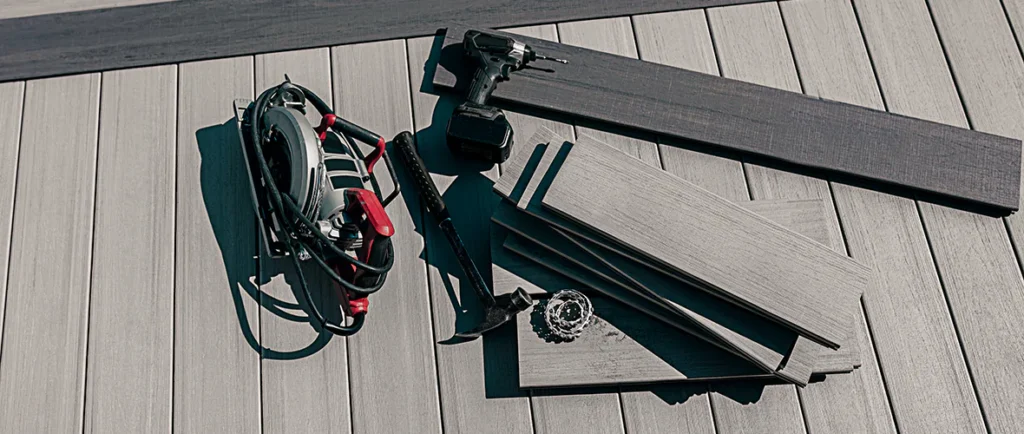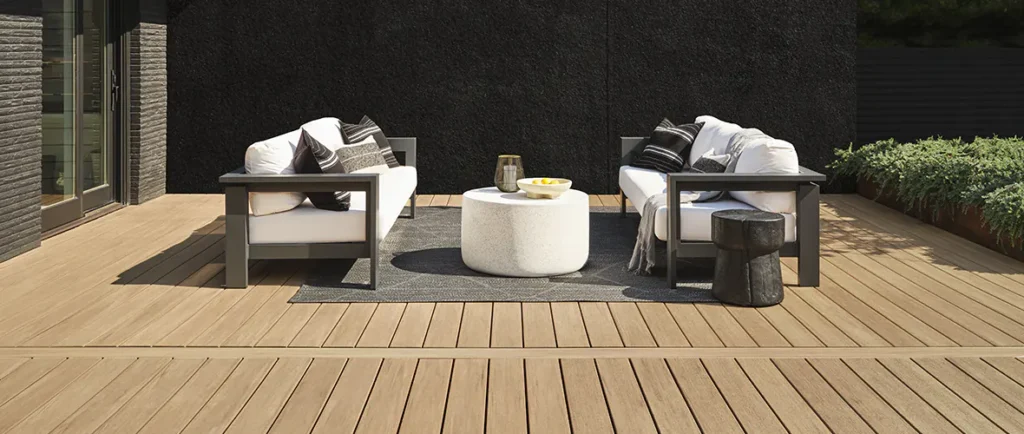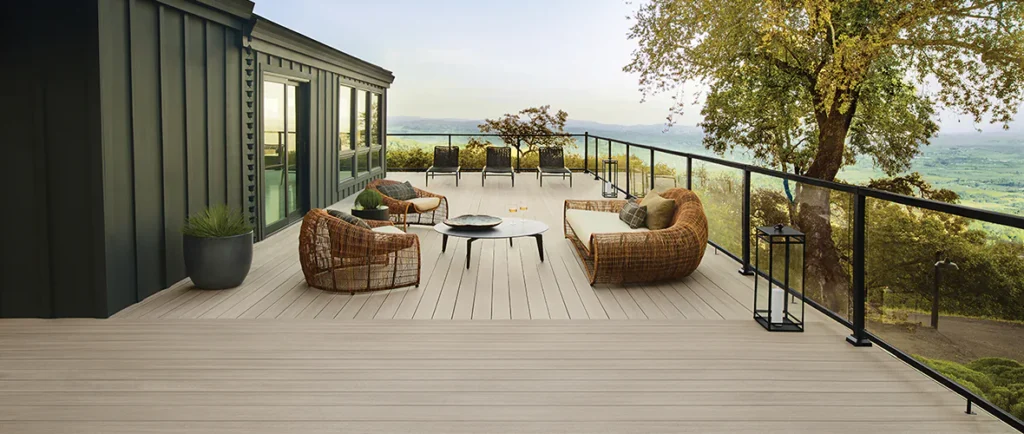If you’ve just purchased a home with an existing deck or recently updated your siding, you may look at your deck design and wonder, “Can you paint composite decking?”
Yes, you can, but it depends. You can safely paint and stain older, uncapped composite deck boards, but modern composite boards often feature polymer caps that you shouldn’t paint or stain.
Even if you have an older deck, painting the deck boards may void your warranty and will increase maintenance needs, as you’ll need to repaint the boards regularly.
Always contact your deck board manufacturer before painting, staining, or sealing your composite decking, and consider investing in modern capped composite to reduce your annual maintenance time and costs.
If your composite deck is 10-years-old or older, learn how to tell if you can paint or stain your manufactured boards and tips for the best finish.
In This Article:
What To Know Before Painting Composite Decks
You can’t paint every composite deck since modern boards often have a polymer cap that protects the core from weathering and rot. Older composite materials were usually uncapped and may receive paint or stain well—check with your manufacturer for details.
You’ll need to check your boards before you prepare to paint. Look at any product details you have or the board’s cut end to see if it features a polymer cap. Capping is often three or four-sided, and will either wrap completely around the profile, or cover the top and side edges.
Inspect for damage while you’re at it. Look for swelling, cracking, and splitting and make any necessary repairs. Your deck boards should be in good structural shape and suitable for your deck surface before treatment.
TimberTech Tip:
Never paint or seal the surface of any TimberTech Advanced PVC or Composite Decking.
Composite decks don’t need a coat of paint or stain to retain their integrity and beauty. They’re designed with low maintenance in mind, so adding paint is strictly an aesthetic choice, that may compromise the board’s performance. The polymer capping already protects the core from water and UV damage, and paint will likely fade or chip over time, increasing annual maintenance needs and costs.
If you decide to paint your older composite deck, you’ll need to thoroughly prepare the boards first.
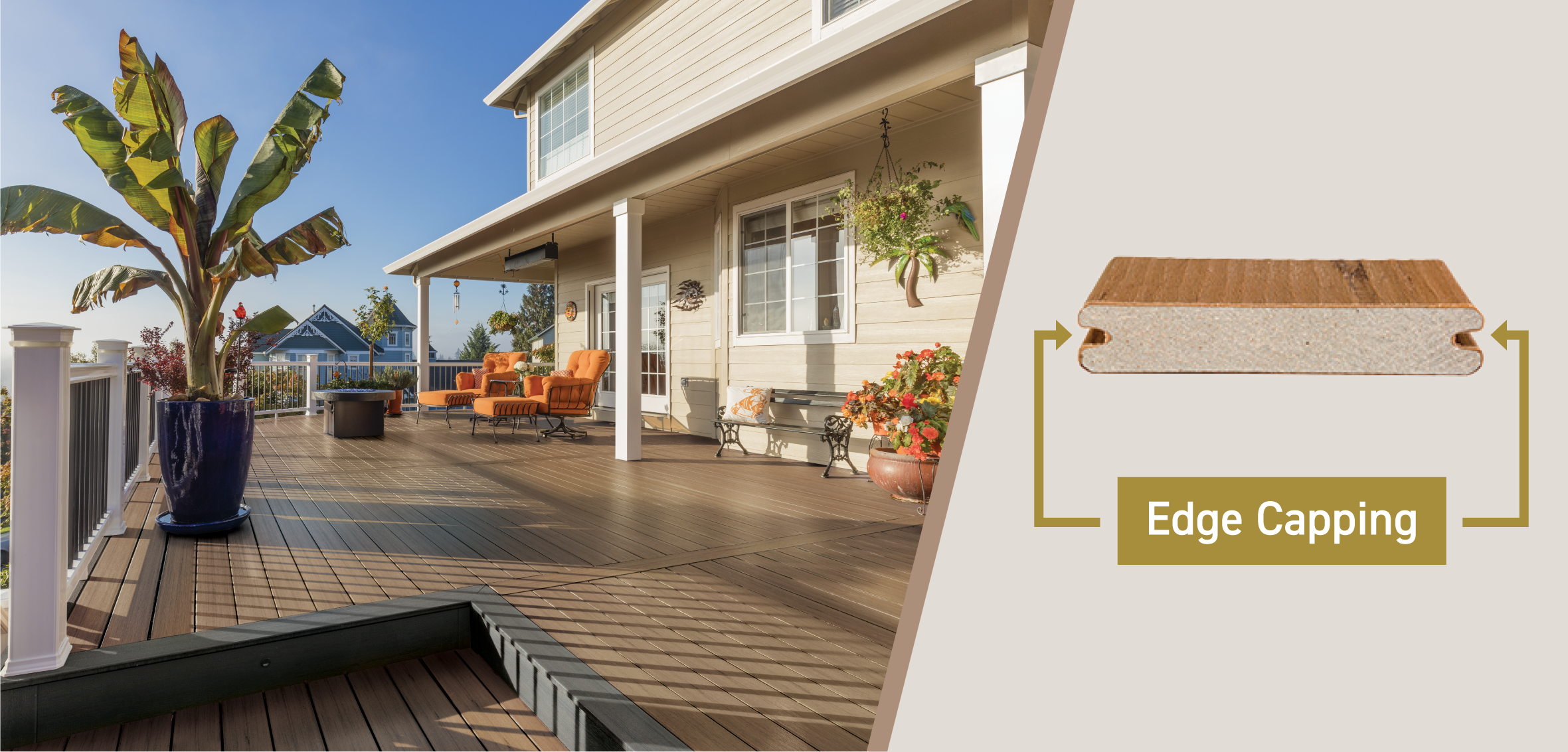
How To Paint Uncapped Composite Decking
Once you’ve established that your deck boards are suitable for painting, the process is relatively straightforward. You’ll need a few items to get started:
- Exterior rated paint (follow your manufacturer guidelines)
- Primer
- Paint roller
- Brush
- Sander
- 240 grit sandpaper
- Deck cleaner
- Cleaning brush (follow your manufacturer guidelines)
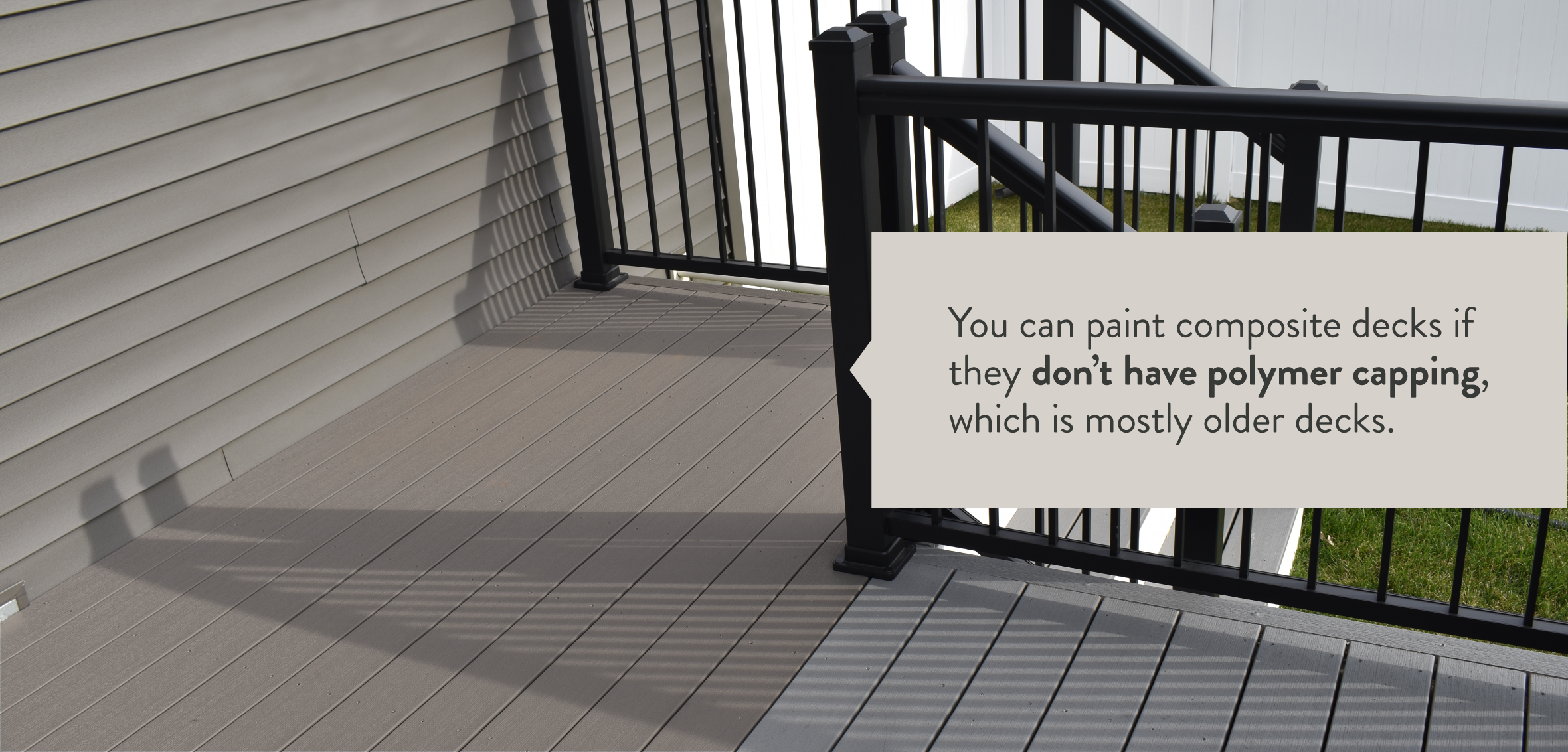
1. Clean your deck
Your first step is to deep clean your deck. Remove any furniture and decor, and sweep debris off of the surface. Remember to dig between each deck board and the ledger board to remove stuck leaves and debris with a crevice cleaning tool.
Next, consult your deck manufacturer’s guidelines and follow the outlined cleaning instructions. Scrub the deck surface with the appropriate brush and cleaning agent based on your deck material and manufacturer, then rinse and allow the deck to dry entirely. Be sure you’ve removed all mold and mildew, too.
Avoid starting this process if you’re expecting unfavorable weather in the next few days.
2. Sand the boards (optional)
After the boards are clean and dry, use a power sander or manually sand the deck surface with 240 grit sandpaper to create a slightly-rough texture for the paint to adhere better.
Note that sanding can affect any existing grain or slip-resistant coatings, so consider what finishes your deck has and how sanding may damage them before you begin.
Finish sanding the deck, then clear the surface of dust and debris with a broom, leaf blower, or cloth.
3. Apply a primer
Primer provides a smooth foundation for any painting project, but it’s not a must-have step depending on the type of paint you choose. Follow the paint manufacturer’s recommendations to decide if primer is right for your project.
Begin with a brush and apply a latex primer into all of the gaps and crevices of your deck surface. Then apply a full coat across your deck boards using a roller or brush for a smooth and even application.
Follow the primer’s manufacturer guidelines for dry time and allow the surface to dry completely. Then you’re ready to paint.
4. Paint your deck
Finally, you’re ready to paint your composite deck for a fresh, new look. Apply an even coat of paint to your deck surface using a telescoping roller, and cover the details with a hand brush. Apply a second coat as necessary and allow the paint to dry completely before adding your deck furniture and enjoying your deck.
5. Seal over the paint (optional)
You may choose to apply a sealer once your paint dries to increase durability and performance. Check with your paint’s manufacturer for sealer recommendations.
Remember that sanding and painting your composite decking impacts some of its low-maintenance perks since you’ll have to repaint if your finish degrades, chips, or peels over time. Applying sealer over the paint slows the paint’s wear so you don’t have to repaint your deck as often.
You’ll apply a sealer with a roller as you did the primer and the paint. Allow the coat to dry completely.
Composite decks offer several low-maintenance and aesthetic advantages over wood, including fade, UV, and water resistance. You can paint composite decks if they don’t have polymer capping, which is mostly older decks. However, once you paint your boards, you’ll likely have to repaint them within a few years when the finish degrades.
Consider upgrading your deck with modern capped composite decking instead, and enjoy the real-wood looks and protective polymer caps TimberTech offers.
TimberTech decking: Resists staining and fading
Who doesn’t want a freshly stained deck with no stripping and a rich saturated hue? The problem is that traditional wood deck stains will fade soon after they’re applied.
To get that freshly stained look and keep it without the hassle, opt for no-stain-needed TimberTech Advanced PVC or Capped Composite Decking, which holds its rich color for decades – not days. Ready to see the difference for yourself? Order free decking samples and explore all of the amazing colors in real wood looks TimberTech has to offer.
